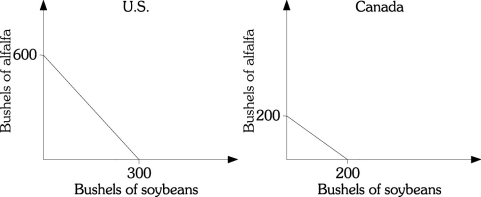Multiple Choice
Refer to the information provided in Figure 20.1 below to answer the question(s) that follow.  Figure 20.1
Figure 20.1
-Refer to Figure 20.1. Which of the following statements is true?
A) The United States has both an absolute advantage and a comparative advantage in the production of soybeans and alfalfa.
B) The United States has an absolute advantage in the production of soybeans and alfalfa, but a comparative advantage only in the production of soybeans.
C) The United States has an absolute advantage in the production of soybeans and alfalfa, but a comparative advantage only in the production of alfalfa.
D) The United States has a comparative advantage in the production of both soybeans and alfalfa, but an absolute advantage only in the production of soybeans.
Correct Answer:

Verified
Correct Answer:
Verified
Q98: According to the theory of comparative advantage,
Q99: Refer to the information provided in Figure
Q100: _ allow(s) a country to produce on
Q101: Related to the Economics in Practice on
Q102: An export subsidy raises the domestic price
Q104: If the exchange rate between the United
Q105: Refer to the information provided in Figure
Q106: The case for _ is based on
Q107: Suppose that Japan and India are both
Q108: When a nation's net exports are equal